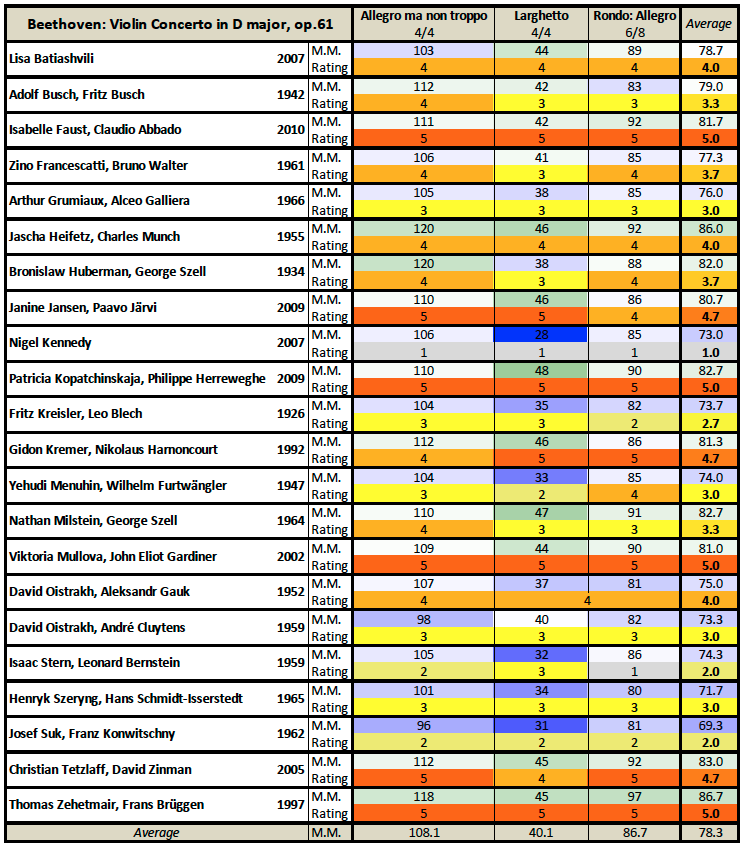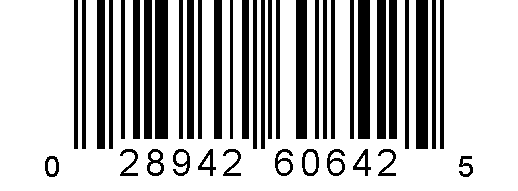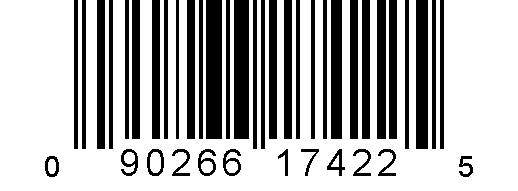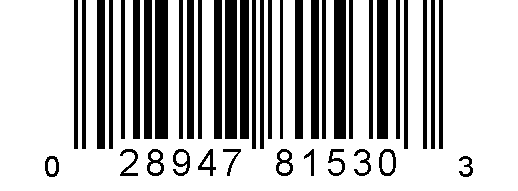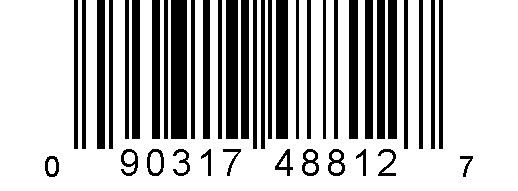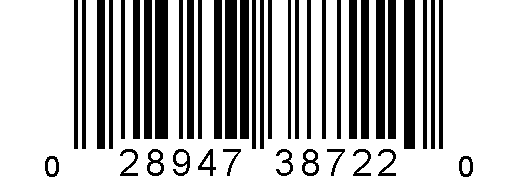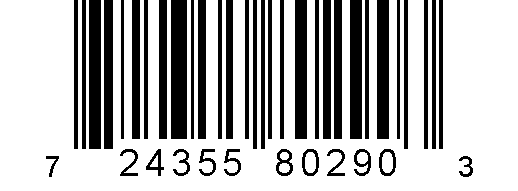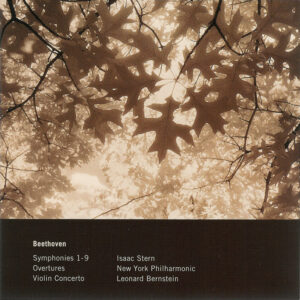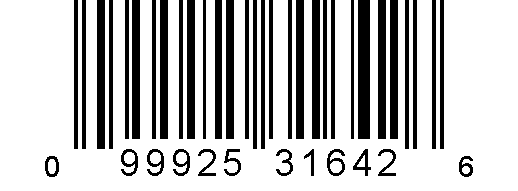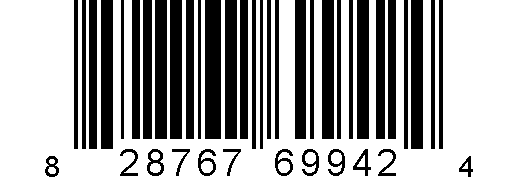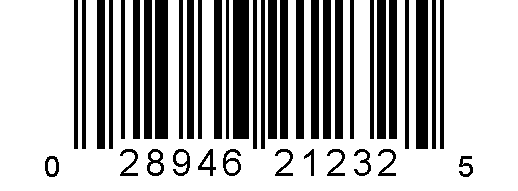Ludwig van Beethoven
Violin Concerto in D major, op.61
Media Review / Comparison
2015-02-02 — Original posting
2016-08-02 — Brushed up for better readability
2018-07-25 — Corrected recording date for Oistrakh / Gauk
2018-07-29 — Re-checked recording dates, corrections for Huberman / Szell and Oistrakh / Gauk
Table of Contents
- Introduction / The Recordings
- About Beethoven’s Violin Concerto
- The Interpretations, Overview
- The Interpretations, Detail
- Procedures
- Lisa Batiashvili , Deutsche Kammerphilharmonie Bremen ( 2007 )
- Adolf Busch , Fritz Busch , New York Philharmonic Orchestra ( 1942 )
- Isabelle Faust , Claudio Abbado , Orchestra Mozart (2010)
- Zino Francescatti , Bruno Walter , Columbia Symphony Orchestra (1961)
- Arthur Grumiaux , Alceo Galliera , New Philharmonia Orchestra (1966)
- Jascha Heifetz , Charles Munch , Boston Symphony Orchestra (1955)
- Bronisław Huberman , George Szell , Vienna Philharmonic Orchestra (1934)
- Janine Jansen , Paavo Järvi , Deutsche Kammerphilharmonie Bremen (2009)
- Nigel Kennedy , Polish Chamber Orchestra (2007)
- Patricia Kopatchinskaja , Philippe Herreweghe , Orchestre des Champs-Elysées (2009)
- Fritz Kreisler , Leo Blech , Orchester der Berliner Staatsoper (1926)
- Gidon Kremer , Nikolaus Harnoncourt , The Chamber Orchestra of Europe (1992)
- Yehudi Menuhin , Wilhelm Furtwängler , Lucerne Festival Orchestra (1947)
- Nathan Milstein , George Szell , Prague Philarmonic Orchestra (1964)
- Viktoria Mullova , John Eliot Gardiner , Orchestre Révolutionnaire et Romantique (2002)
- David Oistrakh , Aleksandr Gauk , USSR Radio Grand Symphony Orchestra (1952)
- David Oistrakh , André Cluytens , Orchestre National de la Radiodiffusion Française (1959)
- Isaac Stern , Leonard Bernstein , New York Philharmonic Orchestra (1959)
- Josef Suk , Franz Konwitschny , Czech Philharmonic (1962)
- Henryk Szeryng , Hans Schmidt-Isserstedt , London Symphony Orchestra (1965)
- Christian Tetzlaff , David Zinman , Tonhalle Orchestra Zurich (2005)
- Thomas Zehetmair , Frans Brüggen , Orchestra of the 18th Century (1997)
- Addendum
Introduction / The Recordings
This posting is about Ludwig van Beethoven’s Violin Concerto in D major, op.61, of which I currently have more than 20 recordings:
1926 — 1964
- Fritz Kreisler, Leo Blech, Orchester der Berliner Staatsoper (1926)
- Bronislaw Huberman, George Szell, Vienna Philharmonic Orchestra (1934)
- Adolf Busch, Fritz Busch, New York Philharmonic Orchestra (1942)
- Yehudi Menuhin, Wilhelm Furtwängler, Lucerne Festival Orchestra (1947)
- David Oistrakh, Aleksandr Gauk, USSR Radio Grand Symphony Orchestra (1952)
- Jascha Heifetz, Charles Munch, Boston Symphony Orchestra (1955)
- David Oistrakh, André Cluytens, Orchestre National de la Radiodiffusion Française (1959)
- Isaac Stern, Leonard Bernstein, New York Philharmonic Orchestra (1959)
- Zino Francescatti, Bruno Walter, Columbia Symphony Orchestra (1961)
- Josef Suk, Franz Konwitschny, Czech Philharmonic (1962)
- Nathan Milstein, George Szell, Prague Philharmonic Orchestra (1964)
1965 – 2010
- Henryk Szeryng, Hans Schmidt-Isserstedt, London Symphony Orchestra (1965)
- Arthur Grumiaux, Alceo Galliera, New Philharmonia Orchestra (1966)
- Gidon Kremer, Nikolaus Harnoncourt, The Chamber Orchestra of Europe (1992)
- Thomas Zehetmair, Frans Brüggen, Orchestra of the 18th Century (1997)
- Viktoria Mullova, John Eliot Gardiner, Orchestre Révolutionnaire et Romantique (2002)
- Christian Tetzlaff, David Zinman, Tonhalle Orchestra Zurich (2005)
- Lisa Batiashvili, Deutsche Kammerphilharmonie Bremen (2007)
- Nigel Kennedy, Polish Chamber Orchestra (2007)
- Janine Jansen, Paavo Järvi, Deutsche Kammerphilharmonie Bremen (2009)
- Patricia Kopatchinskaja, Philippe Herreweghe, Orchestre des Champs-Elysées (2009)
- Isabelle Faust, Claudio Abbado, Orchestra Mozart (2010)
In the discussion below, I deal with the recordings in alphabetic order. My listening sequence is neither alphabetic nor chronological.
Several of these were also present in my LP collection, additional recordings were added as CDs or digital downloads, in order to have more recent interpretations for comparison.
About Beethoven’s Violin Concerto
Ludwig van Beethoven (1770 – 1827) wrote his Violin Concerto in D major, op.61 in 1806. The work was allegedly premiered with the soloist (Franz Clement) sight-reading his part, because the composer was late in finishing the composition. That’s something hardly imaginable today, in a time where everybody expects perfection down to the tiniest of details. The work is so well-known that I’ll refer to Wikipedia and literature for further information.
The Movements
The violin concerto follows the “classic” path by featuring three movements, along the scheme fast — slow — fast. I’m not posting score samples in the text below. Free scores are available for download.
I. Allegro ma non troppo, 4/4
For Beethoven’s time, the first movement in this concerto is very long: 535 bars, excluding the cadenza; Fritz Kreisler’s cadenza (as a typical / representative example) adds another 65 bars, adding up to a total of 22 – 25 minutes.
II. Larghetto, 4/4 —
The second movement (ca. 8 – 12 minutes) is 91 bars and ends in a cadenza (ad lib.), followed immediately by the last movement:
III. Rondo: Allegro, 6/8
The final movement (ca. 8 – 10 minutes) is a Rondo of 360 bars; a fermata in bar 279 is marked “Solo Cadenza“; the piano transcription also features a short cadenza in bar 92, before the Rondo theme returns for the first time.
Cadenzas
All movements offer opportunities for cadenzas: a big one in the first movement (bar 511), one at the end of the second movement (bar 91), leading into the final movement, and one (possibly two) cadenzas in the last movement (bar 279, possibly also at bar 92), see the discussion below. Beethoven has not composed any cadenzas for the violin concerto. But he has transcribed the concerto for piano and orchestra (op.61a). There, he has indeed written cadenzas, among them a very long one for the first movement, interestingly with participation of the timpani. A large number of violinists and composers have written cadenzas for this concerto. The interpretations presented here cover a small, but probably representative fractions of what is available.
A partial list of cadenzas is shown in the Wikipedia entry to the concerto; here’s a list of cadenzas for which I either have the sheet music, and/or which are played by the artists in this comparison:
Beethoven’s Cadenzas for the Piano Transcription (op.61a)
- As mentioned, Beethoven has written cadenzas for the piano transcription of the concerto only (op.61a); these are available together with Wolfgang Schneiderhan’s transcription for the violin (see below), © G.Henle-Verlag,München-Duisburg, 1968:
- a somewhat monstrous cadenza to the first movement (125 bars, or 141 bars if the two parts of the central march are repeated), with participation of the timpani
- a cadenza of 16 bars for the end of the second movement, at the transition to the Rondo;
- two cadenzas for the third movement, one for the fermata at bar 92 (5 bars plus free section), a bigger one for the fermata at bar 279 (15 bars, with free sections)
Cadenzas Based on Beethoven’s (for the Piano Transcription)
- Wolfgang Schneiderhan (1915 – 2002) ventured transcribing Beethoven’s cadenzas for the piano version of the concerto for the violin. It’s an impossible task, strictly speaking, as Beethoven’s score is very piano-specific. But it’s all we have from the composer, and so, a violin transcription is certainly worth a try, and somehow the most authentic approach. Schneiderhan’s transcription is available along with Beethoven’s piano cadenza, © G.Henle-Verlag,München-Duisburg, 1968. Schneiderhan’s transcriptions for movement 1 and 3 are played by Faust and Zehetmaier
- mvt. 1 — 107 bars (slightly shortened from Beethoven’s text, the central march not repeated);
- mvt. 2 — 19 bars, with a free section;
- mvt. 3 — 5 bars, with a free section (for the fermata at bar 92), plus one with 15 bars, with free sections (for the fermata at bar 279)
- Christian Tetzlaff (*1966) wrote and plays his own transcriptions based on Beethoven’s piano cadenzas, for the first movement also with participation of the timpani. These are available from Schott, Mainz, under ED 20482, ISMN 979-0-001-15408-6
- Gidon Kremer (*1947) took a slightly different approach to transcribing Beethoven’s original cadenzas;
- mvt. 1: here, the entire Beethoven cadenza is played, by a piano (behind a curtain) and timpani. Often, the piano is playing alone (especially in chords-only parts), and where that’s possible, Kremer takes over the right hand of the piano. Interesting!
- mvt. 2: Beethovens cadenza at full length, transcribed for the violin. Thomas Zehetmaier takes the same approach.
- mvt. 3: as with mvt. 1, but without timpani.
- Patricia Kopatchinskaja (*1977) did her own transcription as well, similar to Kremer. She tries playing the Beethoven cadenza (with some abbreviations, with timpani) without a piano, but where she can’t play the left hand in the first movement, a second violin is helping out. An unconventional approach, for sure!
Popular Cadenzas by Famous Violinists
- Joseph Joachim (1831 – 1907) has written two sets of cadenzas for the concerto, plus a simplified versions of the first set for the first and third movement; these are available as part of Edition Peters 9115 (together with cadenzas for concertos by Mozart, Viotti, and Brahms), or in the collection “Beethoven, Cadenzas to Ludwig van Beethoven’s Concerto for Violin and Orchestra, op.61” in Bärenreiter, Kassel, BA 9020 (ISMN 979-0-006-53860-7), which also features cadenzas various other composers, see below:
- mvt. 1 — first version: played by Szeryng and Huberman (both full version)
- mvt. 2 — first version: played by Haifetz; Huberman, Menuhin, Stern play the beginning only
- mvt. 3 — first version: played by Haifetz (parts / varied) and Huberman (shortened)
- Fritz Kreisler (1875 – 1962) has written a set of cadenzas that is very popular. These are certainly the most played cadenzas for this concerto (Edition Schott, ED 1446 / ISMN 979-0-001-03320-6);
- mvt. 1: 65 bars, played by Batiashvili, Francescatti, Grumiaux, Jansen, Kennedy, Kreisler (obviously!), Menuhin, Oistrakh, Stern
- mvt. 2: 7 bars, played by Francescatti, Kennedy (parts only), Kreisler; shortened version played by Batiashvili, Grumiaux, Oistrakh
- mvt. 3: 53 bars, played by Batiashvili, Francescatti, Jansen (shortened), Kreisler, Menuhin, Oistrakh.
Other Cadenzas
- Adolf Busch (1891 – 1952) and Nathan Milstein (1904 – 1992) are playing their own cadenzas in all three movements; Busch’s cadenzas have been published by Felix Treiber, via Edition 49, as “e49 08056-00” (© 2008)
- Leopold Auer (1845 – 1930) has written several cadenza versions to all movements. Haifetz derived the cadenza for the first movement from a version by Auer. Auer’s cadenzas are included in the above volume by Bärenreiter (BA 9020).
- Ottavio Dantone (*1960) has written cadenzas for and played by Viktoria Mullova
- Váša Příhoda (1900 – 1960) has written the cadenza played by Josef Suk.
- In movements 2 and 3, Nigel Kennedy, Henryk Szeryng, and Isaac Stern (mvt. 3 only) play their own cadenzas.
- The Bärenreiter volume (Bärenreiter, Kassel, BA 9020, ISMN 979-0-006-53860-7, see also Joseph Joachim’s and Leopold Auer’s cadenzas, above) includes additional cadenzas by
- Ferdinand David (1810 – 1873),
- Jacob Dont (1815 – 1888),
- Ferdinand Laub (1832 – 1875),
- Bernhard Molique (1802 – 1869),
- Ottokar Nováček (1866 – 1900, mvt. 1 and 2 only),
- Camille Saint-Saëns (1835 – 1921),
- Louis Spohr (1784 – 1859),
- Henri Vieuxtemps (1820 – 1881),
- Henryk Wieniawski (1835 – 1880, mvt. 1 only), and
- Eugène Ysaÿe (1858 – 1931, mvt. 1 only).
The Interpretations, Overview
In order to provide a rating overview, as well as an idea about tempo relations both within an interpretation, as well as between the recordings, I have prepared the little table below (click for full size view). The color coding for the tempo (blue = slower, green = faster) refers to the average between the recordings (Beethoven did not specify metronome marks for this composition):
The metronome rates were evaluated from small segments close to the beginning of each movement. They are approximations and don’t account for tempo changes within a movement (such as those with George Szell conducting). In the case of the first movement, the metronome rate (M.M.) was calculated as average, from the duration of the 510 bars up to the beginning of the cadenza. Again, actual rates may vary substantially.
The Interpretations, Detail
Apart from the structure of the composition (i.e., the three movements with their individual characters), discussing Beethoven’s violin concerto should really cover three entities: the soloist, obviously (with tone, articulation, intonation, etc.), the orchestra (sound, articulation, transparency, dynamics, differentiation, agogics, etc.), and the cadenzas. The last point is the trickiest one, as Beethoven did not write cadenzas for the violin (just for his piano transcription, see above), which — given the popularity of this concerto — led to a large variety of cadenzas to choose from. Different cadenzas are not strictly comparable, but one can still try applying (subjective, though) esthetic criteria, i.e., whether a cadenza is well-played, makes sense as a (originally/ideally improvised) composition, and whether it is a good fit for the concerto and its interpretation.
Procedures
In order to make sure that my comments and my rating cover these aspects as much as possible, for the first movement I have done a cross-comparison in three steps: a) the orchestral introduction, b) the part from the entry of the violin up to the beginning of the cadenza, and c) the cadenza and the coda. I have rated these three aspects separately (1 .. 5), the rating in the table above is the average of these individual subratings. For the sub-ratings, I have sometimes added “+” or “-” (rather than fractional numbers). The result in the table above is rounded to integers, though.
Lisa Batiashvili, Deutsche Kammerphilharmonie Bremen (2007)
Ludwig van Beethoven: Violin Concerto in D, op.61
Sulkhan Tsintsadze: 6 Miniatures
Lisa Batiashvili, Deutsche Kammerphilharmonie Bremen
The Georgian Chamber Orchestra (Tsintsadze)
Sony BMG classical (iTunes download, stereo, 256 kbps); ℗ 2008
Booklet: none
The Georgian violinist Lisa Batiashvili (*1979) recorded the Beethoven violin concerto in 2007, with the Deutsche Kammerphilharmonie Bremen, which she is also conducting for this recording. The CD includes six Miniatures (12’46” total time) by the Georgian composer Sulkhan Tsintsadze (1925 – 1991), which Lisa Batiashvili is playing with the Georgian Chamber Orchestra. Lisa Batiashvili’s instrument is the Antonius Stradivarius, “Engleman” from 1709.
Notes on the Movements
I. Allegro ma non troppo, 4/4
Duration: 24’38”
Orchestra / Introduction: Good articulation; occasionally, the orchestra may feel a bit massive, maybe “loud” (in ff passages). (4)
Solo: Very good — clean, very nice, well-balanced tone; the vibrato is sometimes a bit strong, but never overblown. (4)
Cadenza
Fritz Kreisler; very good, dramatic, but also with lyrical passages, exploiting the full dynamic range, cantabile. Intonation very good (though not quite as good as Isabelle Faust‘s). (4)
II. Larghetto, 4/4 —
Duration: 9’05”
Often dense and intense in the orchestra, expressive and emotional, colorful (I like the pale tone in the soft / pp cantabile sections!), unpretentious.
Cadenza: Fritz Kreisler (shortened / beginning only);
III. Rondo: Allegro, 6/8
Duration: 10’01”
Well-played in general by the soloist and the orchestra; the articulation in the main theme is not always 100% coherent between soloist and orchestra, and the intonation in the violin is sometimes a tiny little bit flat (for my taste). Also, occasionally, the solo part appears a tad fast, compared to the orchestra, and the final chords are a little too heavy / forceful in the orchestra.
Cadenza: bar 279 only — the complete cadenza by Fritz Kreisler, with really excellent playing, differentiated in agogics, dynamics, with careful, clear articulation, never rushed; in this comparison I think this is the best interpretation of this cadenza, and not just taken as a showpiece.
Summary
Overall Duration: 43’44”
Rating (see above for details): 4.0(4 / 4 / 4) — A very good interpretation — congrats!
Adolf Busch, Fritz Busch, New York Philharmonic Orchestra (1942)
Ludwig van Beethoven: Violin Concerto in D, op.61
Ferruccio Busoni: Violin Concerto in D, op.35a
Adolf Busch, Fritz Busch, New York Philharmonic Orchestra
Bruno Walter, Royal Concertgebouw Orchestra (Busoni)
IDIS (iTunes download, mono, 256 kbps); ℗ 1999
Booklet: none
Adolf Busch (1891 – 1952) was one of the prominent violinists in the first half of the 20th century. He recorded this concerto live, during a concert in New York, on 1942-02-09; he is accompanied by the New York Philharmonic under the direction of his brother, Fritz Busch (1890 – 1951). The CD also includes Ferruccio Busoni’s Violin Concerto in D, op.35a, from a live recording (1936) with the Royal Concertgebouw Orchestra under the direction of Bruno Walter.
Notes on the Movements
I. Allegro ma non troppo, 4/4
Duration: 21’54”
Orchestra / Introduction: Not too legato, good tempo, coherent interpretation. (3)
Solo: Less legato than Oistrakh; occasionally, the soloist storms ahead, while his brother Fritz Busch appears to conduct defensively. This results in occasional coordination issues. However, one should consider this a live recording. There was probably no chance of making corrections, also for occasional intonation issues in the solo part, other than by repeating the recording for an entire movement. Distinct articulation, phrasing and agogics. Some Zeitgeist is felt in the amount of vibrato, and in the stronger staccato in some passages. (3+)
Cadenza
Adolf Busch; I’d expect Adolf Busch to play his own cadenza — and for course he does: it’s a rather modern-ish piece. He also refers to elements from Joachim’s and Kreisler’s cadenzas, but here’s it is embedded in newer harmonies, into fascinating virtuoso playing, never sounding like stereotypes. I definitely prefer it over the one played by Suk. Busch’s playing is excellent, technically flawless. (4+)
II. Larghetto, 4/4 —
Duration: 9’25”
Some heavy Zeitgeist in articulation, vibrato and tone — not as impressive as the first movement.
Cadenza: Adolf Busch (a short, virtuosic, broken scale down);
III. Rondo: Allegro, 6/8
Duration: 9’13”
Joyful (Allegro, after all!), with drive. The tempo is relatively fast — and yet, the soloist has a tendency to storm ahead; but overall, that’s a minor irritation here, as the two brothers know each other well enough for producing a convincing result.
Cadenza: Adolf Busch wrote his own cadenza, for bar 279 only — short (shorter than published), virtuosic. It’s maybe not a “super cadenza“, but definitely fine.
Summary
Overall Duration: 40’30”
Rating (see above for details): 3.3 (4 / 3 / 3) — An interesting recording, for sure. Not my first choice, but still…
Isabelle Faust, Claudio Abbado, Orchestra Mozart (2010)
Alban Berg: Violin Concerto “To the Memory of an Angel”
Ludwig van Beethoven: Violin Concerto in D, op.61
Isabelle Faust, Claudio Abbado, Orchestra Mozart
Harmonia mundi France HMC 902105 (CD, stereo); ℗ 2012
Booklet: 26 pp., fr/en/de
Isabelle Faust (*1972) is one of my favorite violinists. I’m so glad to have this recording from 2010, especially as it was recorded in cooperation with the late Claudio Abbado (1933 – 2014) and his Orchestra Mozart. The CD includes Alban Berg’s very intense Violin Concerto “To the Memory of an Angel”. Isabelle Faust’s instrument is the Antonius Stradivarius “Le belle au bois dormant” (“Dornröschen“), from 1704.
Notes on the Movements
I. Allegro ma non troppo, 4/4
Duration: 22’56”
Orchestra / Introduction: Excellent, very nice, very careful and detailed in articulation and phrasing, with warm, rounded, full orchestra sound. Dynamically very differentiated, very nice wind instrument sound; relatively smooth, but not polished, and the tempo is good, “careful” / considerate. My only minor reservation is that I would have preferred wooden drum sticks, rather than the soft ones in use here. (5)
Solo: Excellent, as expected: very good, light articulation (not quite as must into spiccato as Zehetmaier), minimal vibrato, and — linked to that — maybe the best intonation of all interpretations, as close to perfection as one ever gets (intonation to me is one of the biggest challenges in this concerto, and vibrato often is obscuring intonation), excellent, “speaking” phrasing and dynamics (as also in the orchestra), very good agogics, both small and larger scale. While Gardiner and Brüggen have prominent brass voices, Claudio Abbado appears to put more weight / attention on the woodwinds (bassoons!). Excellent, overall, even though the orchestra is not quite as HIP and more legato as in Zehetmaier / Brüggen. Equally good in the recording technique, i.e., sound, balance, transparency, tone, amount of reverberation, etc. (5)
Cadenza
Wolfgang Schneiderhan, after Beethoven (with timpani), slightly shortened; Isabelle Faust cuts a few bars in the first part, but in compensation repeats the second part of the central, fast march (with timpani), she cuts the entire Meno Allegro part following the march, as well as the subsequent Presto up to bar 70 — but in the parts which she retains, she is very close to Schneiderhan’s score. The result is a well-balanced piece that very well fits the entire movement. It’s certainly less of a monstrosity than Beethoven’s cadenza (at least if transferred to the violin in full length!). Excellent — puts this cadenza up there with the very top of the league, and of course, Isabelle Faust’s articulation, tone, phrasing and intonation are absolutely flawless! (5+)
II. Larghetto, 4/4 —
Duration: 9’21”
Excellent also here! Wonderfully lyrical and expressive in the orchestra. It’s maybe a bit more legato than some of the true HIP versions. Isabelle Faust is extremely careful and detailed in the articulation, the intonation even better than Zehetmaier‘s (as she uses much less vibrato, and where she does, it’s unobtrusive, fairly flat / low-amplitude), but also expressive, even expansive in dynamics, almost dramatic, where needed. It’s maybe not quite as intimate as Kopatchinskaja‘s interpretation, but very close in overall quality / intensity.
Cadenza: Wolfgang Schneiderhan, after Beethoven (parts only); Isabelle Faust starts with 4 bars from Wolfgang Schneiderhan’s adaptation of Beethoven’s piano cadenza, but then expands into her own virtuosic passages, obviously better suited for the violin (and substantially shorter / more compact) than Beethoven’s piano score. After all, it’s more of a transition between movements than a place to expand into major extra artwork.
III. Rondo: Allegro, 6/8
Duration: 8’34”
Light, clear articulation, and probably the most detailed and accurate dynamic playing in the solo part. The interplay between orchestra and soloist is perfect, Isabelle Faust’s tone and intonation are both excellent
Cadenza: Wolfgang Schneiderhan, after Beethoven; for the first cadenza, at bar 92, Isabelle Faust just plays the first two bars of Schneiderhan’s transcription. A perfectly viable option (given that the violin score only marks a fermata, but doesn’t have an indication that a cadenza is expected). In the main cadenza (bar 279), Isabelle Faust plays Schneiderhan’s transcription almost exactly — except that she skips the 7 central (and very pianistic) bars: again a very convincing solution. It’s Beethoven only, but does not try to achieve the impossible goal of playing a piano score on the violin.
Summary
Overall Duration: 40’50”
Rating (see above for details): 5.0(5 / 5 / 5) — So far, Isabelle Faust has never disappointed. A highly recommended recording, and an essential part of Claudio Abbado’s legacy!
Zino Francescatti, Bruno Walter, Columbia Symphony Orchestra (1961)
Ludwig van Beethoven: Violin Concerto in D, op.61
Jean Sibelius: Violin Concerto in D minor, op.47
Zino Francescatti, Bruno Walter, Columbia Symphony Orchestra
David Oistrakh, Eugene Ormandy, Philadelphia Orchestra (Sibelius)
Sony BMG / Essential classics SBK47659 (CD, stereo); ℗ 1960/61 / © 2001
Booklet: 12 pp. en/de/fr/it
Zino Francescatti (1902 – 1991) recorded the Beethoven violin concerto in 1961, with the Columbia Symphony Orchestra under the direction of Bruno Walter (1876 – 1962).The CD includes the Sibelius violin concerto played by David Oistrakh, with the Philadelphia Orchestra under the direction of Eugene Ormandy.
Notes on the Movements
I. Allegro ma non troppo, 4/4
Duration: 23’41”
Orchestra / Introduction: Slow, rather Andante than Allegro ma non troppo, but a good concept, careful articulation, intense, and the tempo gets better in the course of the introduction. (3)
Solo: Very nice violin tone (though occasionally, the vibrato is a bit fast), carefully articulated, and clean intonation. (4)
Cadenza
Fritz Kreisler (with one minor alteration); very nice, expressive, dramatic, the tone maybe not as big and full as with Oistrakh. (4-)
II. Larghetto, 4/4 —
Duration: 9’42”
Odd sound balance: wind instruments almost cover the violin. The tempo is OK, the soloist plays well, fluent, the vibrato is a bit nervous, sometimes heavy / strong.
Cadenza: Fritz Kreisler;
III. Rondo: Allegro, 6/8
Duration: 10’05”
An excellent (conventional) interpretation, relatively light articulation, differentiated in articulation and agogics, vivid, expressive. Some very minor intonation issues, but very good, full, warm tone in the solo part. Good sound.
Cadenza: Fritz Kreisler, full length, very well-played (one of the better Kreisler cadenza interpretations in this comparison!);
Summary
Overall Duration: 43’38”
Rating (see above for details): 3.7 (4 / 3 / 4) — Yes, can be recommended as a conventional interpretation.
Arthur Grumiaux, Alceo Galliera, New Philharmonia Orchestra (1966)
Ludwig van Beethoven: Violin Concerto in D, op.61; Violin Romances opp.40 & 50
Arthur Grumiaux, Alceo Galliera, New Philharmonia Orchestra
Philips 426 064-2 (CD, stereo); ℗ 1966 / © 1989
Booklet: track listing only
Arthur Grumiaux (1921 – 1986) has recorded this concerto in 1966, with the New Philharmonia Orchestra under the direction of Alceo Galliera (19190 – 1996); the recording includes Beethoven’s two Romances op.40 and op.50.
Notes on the Movements
I. Allegro ma non troppo, 4/4
Duration: 24’09”
Orchestra / Introduction: The beginning is soft and slow, rather an Andante, too legato. Lots of rubato — assuming loud = fast?? (2)
Solo: The violin part sounds clean, though the vibrato is rather strong. Orchestra / conductor: strange tempo alterations / rubato, too slow, sometimes a little clumsy. (2+)
Cadenza
Fritz Kreisler; very cantabile, beautiful tone (plenty of vibrato, but it fits the style here), good agogics, dramatic evolution, expressive, harmonic: nice! (4-)
II. Larghetto, 4/4 —
Duration: 9’01”
Fairly strong vibrato, mostly very legato, the intonation occasionally a touch flat and affected by the vibrato (not “wrong”, though); somewhat static, overall.
Cadenza: Fritz Kreisler, shortened;
III. Rondo: Allegro, 6/8
Duration: 9’06”
A nicely played, conventional interpretation; occasionally, the tempo feels a bit pushed, even though it’s not that fast, some phrase endings are a bit superficial.
Cadenza: Arthur Grumiaux plays his own, comparatively short cadenza (at bar 279 only), using (simplified) elements from Joseph Joachim’s cadenza (first version);
Summary
Overall Duration: 42’16”
Rating (see above for details): 3.0 (3 / 3 / 3) — OK / good, conventional
Jascha Heifetz, Charles Munch, Boston Symphony Orchestra (1955)
Ludwig van Beethoven: Violin Concerto in D, op.61
Johannes Brahms: Violin Concerto in D, op.77
Jascha Heifetz, Charles Munch, Boston Symphony Orchestra
RCA Victor / Sony BMG 09026-61742-2 (CD, mono); ℗ 1985 / © 1995
Booklet: 8 pp., English
Jascha Heifetz (1901 – 1987), one of the great violin virtuosi of the last century, recorded this violin concert (along with the one by Johannes Brahms) in 1955, with the Boston Symphony Orchestra under the direction of Charles Munch (1891 – 1968).
Notes on the Movements
I. Allegro ma non troppo, 4/4
Duration: 20’39”
Orchestra / Introduction: Often rather flat — except for f / ff passages, which are a bit hard, almost harsh. The melody in the second theme is very (too?) legato. (3)
Solo: Flawless technique & intonation, likely the most perfect of the (all) interpretations (that’s what Haifetz was famous for!); very impressive: the eruption in bar 364; rather limited agogics, especially on a small (intra-bar) scale (the focus appears to be on smooth flow); the vibrato is often rather fast, nervous. The violin is very much in the foreground and dominates the recording. (4)
Cadenza
Jascha Haifetz, after Leopold Auer (who is also using elements from Joachim’s first cadenza); it’s very well-played, near-perfect (as expected from this artist), very virtuosic, and a good fit to Beethoven’s music. Though, as a composition, it can’t compete with Kreisler’s or Milstein‘s cadenzas. (4+)
II. Larghetto, 4/4 —
Duration: 8’45”
Fluent tempo maybe at the border of affecting the serenity of the movement; for today’s ears (mine, at least!), the vibrato is sometimes a bit strong / nervous, which also (sometimes) does not help maintaining the serene mood of the movement. But of course, Haifetz’ tone is dense, the technique is as flawless as always!
Cadenza: Joseph Joachim; good to hear Joachim’s cadenza at almost full length, for once! Haifetz omits a bar that was also used by Kreisler (after the initial broken scale) and makes a couple minor adaptations. It’s a fascinating, virtuosic, short cadenza, fast in general, but digesting material from the preceding, slow movement.
III. Rondo: Allegro, 6/8
Duration: 8’33”
The tempo appears pushed, the solo part — though played with flawless technique and very accurate in articulation and dynamics — sometimes a bit harsh, abrupt, just running through. The vibrato may fit the character of this interpretation. It is nervous nevertheless.
Cadenza: after Joseph Joachim: Haifetz just takes the initial 8 bars, then adds a short segment of his own material — good and played with perfection, but not really intriguing.
Summary
Overall Duration: 37’56”
Rating (see above for details): 4.0 (4 / 4 / 4) — If you are looking for technical perfection in a conventional interpretation: here it is, along with rarely played cadenza material.
Bronisław Huberman, George Szell, Vienna Philharmonic Orchestra (1934)
Ludwig van Beethoven: Violin Concerto in D, op.61
Pjotr Ilyich Tchaikovsky: Violin Concerto in D, op.35
Bronisław Huberman, George Szell, Vienna Philharmonic Orchestra
Naxos (iTunes download, mono, 256 kbps); ℗ 2000
Booklet: none
This CD includes two of the few recordings we have from the violinist Bronisław Huberman (1882 – 1947). The Beethoven concerto was recorded on 1934-06-18:20, with the Vienna Philharmonic Orchestra under the direction of George Szell (1897 – 1970). The CD also includes a recording featuring the Tchaikovsky violin concerto, with the Staatskapelle Berlin under William Steinberg.
Notes on the Movements
I. Allegro ma non troppo, 4/4
Duration: 21’08”
Orchestra / Introduction: Features similar, strange accelerandi as the interpretation with Nathan Milstein — like the strong / extreme rubato that appears to be typical of George Szell (in those years, at least). The Orchestra is better than in the one in the Milstein recording, though. (3)
Solo: Expressive, impulsive, even eruptive in agogics and articulation, very clean in intonation, sometimes the trills are a bit fast / nervous. The orchestra is occasionally lagging behind slightly, sometimes equally eruptive in the(excess) rubato; ideally, for this soloist, the orchestra should be more stable, especially in the tempo. (4+)
Cadenza
Joseph Joachim (first version, full, with one minor alteration), see also Szeryng’s interpretation: it’s not a better fit here. Rather to the contrary: Huberman’s playing is more fantastical, even more like Paganini. But the cadenza here is fascinating, enthralling, brilliant, with rubato and rich agogics, technically flawless. (5-)
II. Larghetto, 4/4 —
Duration: 9’09”
Carefully articulated and colorful in the solo part (the orchestra sound is rather muffled). Some of the portamenti now sound a bit too prominent, the vibrato sometimes is a bit heavy, also some of the fast figurations. On the other hand, trills are often too nervous, disturbing the serenity of the piece.
Cadenza: Joseph Joachim (beginning only);
III. Rondo: Allegro, 6/8
Duration: 8’32”
Huberman’s articulation is often rather harsh, sometimes abrupt, with some strange dynamic bursts, even though his technique in general is near-perfect. I’m missing some of the joyful character and also the lyrical aspects in this movement. In the solo part: it all feels a bit pushed. Trills are sometimes very nervous (also the vibrato, but this movement only allows for very occasional use).
Cadenza: Huberman plays about two-thirds of Joseph Joachim’s cadenza (first version). No one else here plays that much. Note that Joachim’s cadenza appears substantially more challenging that Kreisler’s: it’s maybe a bit too Paganini-esque, which may explain why it is not usually played at full length.
Summary
Overall Duration: 38’47”
Rating (see above for details): 3.7 (4 / 3 / 4) — Definitely an interesting document, and an excellent, rare recording of Joachim’s cadenzas.
Janine Jansen, Paavo Järvi, Deutsche Kammerphilharmonie Bremen (2009)
Ludwig van Beethoven: Violin Concerto in D, op.61
Benjamin Britten: Violin Concerto op.15
Janine Jansen, Paavo Järvi, Deutsche Kammerphilharmonie Bremen
Decca 478 1530 (CD, stereo); ℗ / © 2009
Booklet: 20 pp. en/fr/de/nl
In her recording from 2009, Janine Jansen (*1978) combines the Beethoven concerto with the one by Benjamin Britten. She is accompanied by the Deutsche Kammerphilharmonie Bremen (the same ensemble that also played with Lisa Batiashvili), under the direction of Paavo Järvi (*1962).
Notes on the Movements
I. Allegro ma non troppo, 4/4
Duration: 22’57”
Orchestra / Introduction: Somewhat of a “big orchestra sound” in f / ff passages, but light and transparent in the softer (p .. mf) parts. (4+)
Solo: Clear, light articulation, excellent technique, very good, clean intonation, expressive in dynamics and agogics; warm, full tone, natural vibrato. (4+)
Cadenza
Fritz Kreisler; a real pleasure to listen to! Near perfect, with the exception of the slightly muffled sound in the recording (not the violin!): full, warm and dense tone, expressive, dramatic, very good agogics and dynamics, very good intonation! (5)
II. Larghetto, 4/4 —
Duration: 8’21”
Very nice, full tone, expressive, maybe with a slight tendency towards portato / legato, even where Beethoven writes staccato dots. But overall, a beautiful cantabile, and serene music, for sure!
Cadenza: Fritz Kreisler / Joseph Joachim, shortened: just a variation of the initial trill and downward scale (between Kreisler’s and Joachim’s). It’s certainly enough for a transition to the final movement.
III. Rondo: Allegro, 6/8
Duration: 9’26”
Very careful, detailed articulation, very explicit dynamics, technically very well-played, with very nice tone and good intonation; maybe sometimes a bit too boisterous (almost overblown) rather than joyful.
Cadenza: Fritz Kreisler, shortened — only the first 16 bars are played. It may be debatable whether a cadenza as long as Kreisler’s is desirable in a last movement. However, Beethoven’s Rondo contains enough repetitions, such that a longer cadenza will not hurt.
Summary
Overall Duration: 40’41”
Rating (see above for details): 4.7 (5 / 5 / 4) — Excellent interpretation (especially if you are not looking for a HIP version).
Nigel Kennedy, Polish Chamber Orchestra (2007)
Ludwig van Beethoven: Violin Concerto in D, op.61
Wolfgang Amadeus Mozart: Violin Concerto No.4 in D, K.218
Horace Silver: Creepin’ In
Nigel Kennedy, Polish Chamber Orchestra
EMI 0946 3 95373 2 7 (CD, stereo); ℗ / © 2008
Booklet: 12 pp. en/de/fr
Nigel Kennedy (*1956) worked with the Polish Chamber Orchestra when he recorded this CD in 2007. He combines the Beethoven concerto with Mozart’s Violin Concerto No.4 in D, K.218, plus a short piece of Jazz music (pretty moderate, though).
Promotion Video?
The amazon page for this CD includes a short advertisement video, with some very flattering comments about Nigel (as typical on such video ads, see my post on this topic), plus an interview with the artist. What Nigel states in this interview is certainly a legitimate opinion (I have no principal objections to his statements, even though I don’t necessarily agree to 100%). But how he does that interview (with a pint of ale in his hand) … sorry, but comparing his Beethoven to that of other violinists makes me think that he should have taken his beer after the recording session. Seriously: I think that the hype with which he surrounds himself does not transpire through this recording. But I confess that the cross-over cadenzas to the Mozart concerto are fun to listen to.
Notes on the Movements
I. Allegro ma non troppo, 4/4
Duration: 24’36”
Orchestra / Introduction: Coarse, not very differentiated in dynamics & phrasing, often sounds “loud”, the articulation is more or less OK, though. (2)
Solo: To me, intonation, phrasing and articulation are careless / marginal. Often, the tone is rough, the solo part often is at the fringe of sounding rudimentary, e.g., when Kennedy plays belly notes in lieu of accents. (1)
Cadenza
Fritz Kreisler; Kennedy definitely has the technical abilities to master this concerto. But in this cadenza, the articulation is often careless, and I sometimes missing the musical flow, a dramatic concept. Possibly the best part of this movement / recording, but to me, still not good enough. (1)
II. Larghetto, 4/4 —
Duration: 12’51”
“Cloudy”, extremely soft, unclear articulation in the orchestra & in the solo part, extremely slow; belly notes in the solo, occasional, broad portamento, static, celebrated, dynamics rather careless.
Cadenza: Nigel Kennedy, with fragments (beginning) from Fritz Kreisler’s cadenza;
III. Rondo: Allegro, 6/8
Duration: 10’32”
Kennedy certainly has the technical means to master this concerto, but why is some of his articulation so careless? There are pretty coarse belly notes (even when Beethoven writes crescendo and decrescendo forks over a single note, it can’t be meant that coarse), inappropriate bursts on final notes. Is this because he is at the same time conducting? If that causes such issues, he should have left conducting to somebody else and rather stay focused on the solo part. There are also some tempo irregularities, e.g., ff segments suddenly being played faster (loud = fast?? a bad habit!). Also, there are places where the orchestra sounds almost vulgar, or like a Viennese waltz.
Cadenza: none at bar 92 — the “real” cadenza (bar 279) is Kennedy’s own, starting with somewhat monotonous broken chords (minimal art?), later joined by monotonous, stomping beats by cello and bass (supposedly Jazz-like). Not a very good fit in my opinion, rather disruptive.
Summary
Overall Duration: 47’59“
Rating (see above for details): 1.0 (1 / 1 / 1) — I’m unlikely to buy another recording with this artist.
Patricia Kopatchinskaja, Philippe Herreweghe, Orchestre des Champs-Elysées (2009)
Ludwig van Beethoven: Violin Concerto in D, op.61; Violin Romances opp.40 & 50; Violin Concerto WoO 5 (Fragment)
Patricia Kopatchinskaja, Philippe Herreweghe, Orchestre des Champs-Elysées
naïve V 5174 (CD, stereo); ℗ / © 2009
Booklet: 36 pp. fr/en/de
Patricia Kopatchinskaja (*1977) is a “full-blood musician” and to me one of the very best violinists of our days. She teamed up withPhilippe Herreweghe (*1947) and his Orchestre des Champs-Elysées for this recording (2009) covering all of Beethoven’s works for violin and orchestra: not just including the two Romances for violin and orchestra op.40 and op.50, but also offering the rare opportunity to listen to the early fragment WoO 5.
Notes on the Movements
I. Allegro ma non troppo, 4/4
Duration: 22’41”
Orchestra / Introduction: Very good — but the articulation could sometimes be a bit clearer, lighter, more transparent. (4)
Solo: Very impulsive, expressive (though not quite as eruptive as Huberman). Expression is more important than perfection in tone or ultimate esthetics. Kopatchinskaja uses light articulation, often / mostly with little or no vibrato. Vibrant, with vitality. The artist takes considerable liberty in adding ornaments (and alternative readings), altering the text as she sees fit (quite often!), some may even be (or feels like) improvised. Not everybody may agree to 100% with her alterations (see the comment section for additional, valuable information on this) — but at the very least it keeps the listener’s attention in this concerto which is maybe known too well in general! (5-)
Cadenza
Patricia Kopatchinskaja, after Beethoven, for two violins + timpani; an interesting approach! She appears to start off playing Wolfgang Schneiderhan’s or Christian Tetzlaff’s cadenzas, which are both trying to mirror Beethoven’s cadenza for the piano transcription on the violin. But soon, Kopatchinskaja deviates from these existing “back-transcriptions”: she is using her own approach to back-transcribing the piano score, taking the help of a second violin (in this recording, she is playing that part, too, electronically combined), and also with timpani.
Where necessary, the soloist streamlines Beethoven’s monstrous cadenza, streamlining the excessive scales in the first part, not repeating the two parts of the central march, omitting the part following the march (which is extremely pianistic), but then again following the final “Presto, a tempo” part closer to Beethoven’s score than her fellow transcribers / contenders. Overall, she is closer to Beethoven’s text than Schneiderhan or Tetzlaff . One could call this more authentic, while at the same time she is living out her overflowing, dramatic temperament: fascinating, at the very least, even though it can’t be a true representation of a live concert performance! (5-)
II. Larghetto, 4/4 —
Duration: 9’13”
Maybe the fastest tempo in this comparison — yet, it remains calm, serene, but intense — very nice! Patricia Kopatchinskaja’s playing is excellent, beautiful, the dolce and cantabile parts in the middle stunning, marvelous in their ethereal, immensely subtle tone: very touching, indeed! Flawless in intonation, dynamics, agogics and articulation — in short: hard to beat! One single, alternate reading in bar 20. (5+)
Cadenza: Patricia Kopatchinskaja, after Beethoven; similar to Gidon Kremer, Patricia Kopatchinskaja is using Beethoven’s full piano cadenza, with a slightly different “translation approach” — equally successful, maybe more introverted.
III. Rondo: Allegro, 6/8
Duration: 9’06”
Very light articulation in the solo part, with some interesting variations — here more in the articulation than in the melody line. As in Tetzlaff’s interpretation, I really like the country dance / “hurdy-gurdy effect” in the second intermezzo. There aren’t many interpretations which really expose that aspect!
Cadenza: Patricia Kopatchinskaja, after Beethoven: the first cadenza (bar 92) is a very condensed extract from Beethoven’s piano score, very aptly transferred to the violin; in the main cadenza (bar 279), Patricia Kopatchinskaja omits the first part (which would be easier to play on the violin!), but uses essentially all of the challenging 6/8 and free parts (essentially in Schneiderhan’s transcription). Fascinating, boiling over, like the soloist’s temperament!
Summary
Overall Duration: 40’59”
Rating (see above for details): 5.0 (5 / 5 / 5) — The top rating is absolutely justified for this recording, in the second movement, it beats everybody else!
Fritz Kreisler, Leo Blech, Orchester der Berliner Staatsoper (1926)
Ludwig van Beethoven: Violin Concerto in D, op.61
Felix Mendelssohn Bartholdy: Violin Concerto in E minor, op.64
Fritz Kreisler, Leo Blech, Orchester der Berliner Staatsoper (Historical Recordings 1926)
Naxos historical 8.110909 (CD, mono); ℗ / © 2000
Booklet: 4 pp., English
It may be an exaggeration, but to me, Fritz Kreisler (1875 – 1962) somehow appears to be the father of all violin playing in the 20th century; for sure, he has composed the now most popular cadenzas to the Beethoven violin concerto. In this recording — the oldest one in this comparison, from 1926 — he is accompanied by Leo Blech (1871 – 1958) and the Orchestra of the Berlin State Opera. In the same year, he also recorded the Mendelssohn violin concerto (with the same accompaniment), also on this CD.
Notes on the Movements
I. Allegro ma non troppo, 4/4
Duration: 23’54”
Orchestra / Introduction: Obvious limitations in the recording technique, but light in the string sound / articulation (possibly a benefit of the fact that with these early recordings, a small number of orchestra members had to be grouped close to the microphone), not too legato, differentiated, with clear concept. Of course, also some signs of Zeitgeist, such as soft arpeggandi, rubato. (3)
Solo: Amazing violin tone quality (considering the age of the recording); nice, singing tone. Occasional, minor intonation issues (but this is to be considered a live recording, without the possibility for patching etc.). Sure, the orchestra sound is a bit dull, especially the wind instruments, and there are occasional tempo irregularities (strong rubato), sometimes the orchestra is a bit heavy. (3)
Cadenza
Fritz Kreisler; dramatic, expressive, full tone (even through such an old recording!), lots of rubato (but fitting the style here!); very nice (would of course be even nicer in a modern recording!); how could I criticize master Kreisler in his own cadenza? (4)
II. Larghetto, 4/4 —
Duration: 10’25”
Portamenti & strong vibrato (Zeitgeist!), slow, but careful articulation and rubato / agogics, not static, tone better than Menuhin.
Cadenza: Fritz Kreisler;
III. Rondo: Allegro, 6/8
Duration: 10’16”
Some phrases (especially phrase endings, such as bar 4 and equivalents) appear somewhat rushed. Only a fraction of the movement permits Kreisler to play out his strength, his singing, melodic tone.
Cadenza: Fritz Kreisler — also here (as already in the case of the first movement) the most popular cadenza these days.
Summary
Overall Duration: 44’32”
Rating (see above for details): 2.7 (3 / 3 / 2) — A valuable historic document, at the very least!
Gidon Kremer, Nikolaus Harnoncourt, The Chamber Orchestra of Europe (1992)
Ludwig van Beethoven: Violin Concerto in D, op.61; Violin Romances opp.40 & 50
Gidon Kremer, Nikolaus Harnoncourt, The Chamber Orchestra of Europe
Teldec 9031-74881-2 (CD, stereo); ℗ / © 1993
Booklet: 32 pp. en/de/fr/it
Gidon Kremer (*1947) recorded the concerto in 1992, in the popular combination with the two Romances for violin and orchestra op.40 and op.50, with the accompaniment of Nikolaus Harnoncourt(1929 – 2016) conducting the Chamber Orchestra of Europe.
Notes on the Movements
I. Allegro ma non troppo, 4/4
Duration: 24’11”, excluding the trailing silence
Orchestra / Introduction: Very good / excellent, with careful, differentiated articulation and dynamics, never “loud”, remains differentiated even in ff passages. (5)
Solo: Typical for Kremer: the tone is sometimes a bit “airy”, sometimes a bit pale or also slightly rough — but his interpretation / attitude is always engaged, active — an excellent fit for Harnoncourt’s direction! (4)
Cadenza
Ludwig van Beethoven, arranged by Gidon Kremer, for piano, violin and timpani. One could call Schneiderhan’s, Tetzlaff‘s, and Kopatchinskaja‘s approaches “adaptations of (parts of) Beethoven’s piano cadenza for the violin” — Kremer and Harnoncourt try an “even more authentic” approach. Here, we hear the full Beethoven cadenza, with the two repeats in the central march part — played on a piano, positioned behind a curtain (played by Vadim Sakharov), with Kremer taking over parts (typically the right hand, obviously) that appear adaptable for the violin.
Certainly an interesting idea, though it isn’t 100% convincing: as played here, the piano does not take the active, extroverted role that one would expect for pianists in cadenzas, but it remains somewhat passive, like an accompaniment in a violin sonata (and even there I would expect a more active participation). This way, the result is a mix of passive sections and others where Kremer plays out a fragmentary, but very vivid, often brilliant violin part. (4+)
II. Larghetto, 4/4 —
Duration: 8’52”
Very careful in phrasing and with soft articulation in the orchestra, excellent tempo, highlighting the actual melody in the clarinet & bassoon voices. The solo is often (appropriately) kept as accompaniment, low-key, maybe with the exception of a little excess in vibrato in closing peak notes and a few other places, occasionally overblown in amplitude.
Cadenza: Ludwig van Beethoven, arranged by Gidon Kremer: definitely closer to Beethoven’s piano cadenza than Schneiderhan’s shorter version — and yet, it sounds like a real violin cadenza! It starts off with motifs from the Larghetto, moves into figurative passagework, and in the end smoothly transitions to pre-emptive allusions to the Rondo: Beethoven’s piano cadenza is excellent, after all!
III. Rondo: Allegro, 6/8
Duration: 10’01”
Kremer plays the main theme with very light articulation, never forcing the tone. It’s a nice contrast to several others: a truly joyful, lively movement, in general. Kremer also allows for lyrical, almost sentimental tones in the second intermezzo.
Cadenza: Gidon Kremer is playing both of Beethoven’s piano cadenzas, in his own transcription for the violin. In the first one, for bar 92, he plays pretty much Beethoven’s piano score, except that he — nice idea — imitates the two hands using octave shifts, excellently played! The second / “main” cadenza is again played with the help of a “background piano”, which assists in the central 6/8 section which would sound a bit painful if played with the violin alone. A “hair in the soup”: there is apparently a cut at the end of the second cadenza, in the final trill — and here, one may notice a very small shift in pitch — but that is a very minor irritation and does not affect the overall picture of an excellent interpretation.
Summary
Overall Duration: 43’15“
Rating (see above for details): 4.7 (4 / 5 / 5) — Among my top favorites, with an interesting — though a bit far-fetched — cadenza solution for the “Beethoven only” purists.
Yehudi Menuhin, Wilhelm Furtwängler, Lucerne Festival Orchestra (1947)
Ludwig van Beethoven: Violin Concerto in D, op.61; Violin Romances opp.40 & 50
Yehudi Menuhin, Wilhelm Furtwängler, Lucerne Festival Orchestra
Philharmonia Orchestra (Romances)
Testament SBT 1109 (CD, mono); ℗ 1946/1954 / © 1997
Booklet: 16 pp. en/de/fr
Also Yehudi Menuhin (1916 – 1999) combines the Beethoven concerto with the two Romances for violin and orchestra op.40 and op.50, in this recording from 1947, with Wilhelm Furtwängler (1886 – 1954). I definitely wanted a recording with this artist in my collection, but stood away from the more recent recording with Otto Klemperer from 1966, given my pretty disappointing experiences (both TV and live concerts) with Menuhin’s late(r) concert appearances.
Notes on the Movements
I. Allegro ma non troppo, 4/4
Duration: 24’02”
Orchestra / Introduction: Overblown, extreme contrasts in dynamics and articulation, too soft in the first theme — partly Zeitgeist, partly just typical for Furtwängler’s interpretations. (2)
Solo: Often strong alterations in sound / tone quality when changing between strings in the solo instrument. The intonation is pretty clean in the solo part, but not so in the orchestra’s wind section. The usual, strong rubato in the orchestra (louder = faster??), sometimes with coarse dynamics. (3)
Cadenza
Fritz Kreisler; dense tone, typical for Menuhin in those days, dramatic, excellent technique. But I miss some expression, the sense for the lyrical aspects in this cadenza; the vibrato is often fairly strong. Also, I can’t say that the intonation is bad — but I’d personally prefer a slightly different intonation (sharper, occasionally). It’s not that the intonation is obscured by the vibrato (the vibrato is fast, occasionally almost nervous, but not with excess “pitch amplitude”)… (3)
II. Larghetto, 4/4 —
Duration: 10’53”
Lots of vibrato in the orchestra & solo; slow, static. Violin sounds thin.
Cadenza: Joseph Joachim (first 3 bars only);
III. Rondo: Allegro, 6/8
Duration: 10’01”
Rather strong rubato — but for this final movement, that’s OK. Expressive, vivid, even playful at times, very well-played by Menuhin (as by the orchestra). That’s clearly his best movement here, not as good in the sound of the recording, but otherwise at least on a par with Francescatti.
Cadenza: Fritz Kreisler, full length: very virtuosic, lighter than Francescatti — very good interpretation.
Summary
Overall Duration: 45’09”
Rating (see above for details): 3.0 (3 / 2 / 4) — Certainly a recommendation for the last movement, and a valuable historic recording, documenting Menuhin’s art at the height of his career.
Nathan Milstein, George Szell, Prague Philarmonic Orchestra (1964)
Ludwig van Beethoven: Violin Concerto in D, op.61
Nathan Milstein, George Szell, Prague Philharmonic Orchestra
Claves records (iTunes download, stereo, 256 kbps); ℗ 1964
Booklet: none
Claves Records issued this CD from a live recording in Montreux, 1964 (apparently in the flu season!), with Nathan Milstein(1904 – 1992) playing the Beethoven concerto with George Szell(1897 – 1970) conducting the Prague Philharmonic Orchestra.
Notes on the Movements
I. Allegro ma non troppo, 4/4
Duration: 22’14”
Orchestra / Introduction: Bad recording sound, intonation issues with the wind instruments, which are not coherent. Sometimes harsh; strange accelerandi: feels like tempo run-aways, but is more likely just strong rubato, possibly typical for George Szell. (2)
Solo: Beautiful, intense tone, though occasional belly notes in the solo part. Very good intonation — though not always quite coherent with the orchestra. The articulation in the string section (orchestra) is sometimes hard. (3)
Cadenza
Nathan Milstein; Joachim’s and Kreisler’s cadenzas appear to be overpowering: like Suk and Busch, Milstein quotes segments from both these cadenzas, even to a stronger degree (mostly from Kreisler’s). But here, this appears to be an excellent synthesis of these “big” predecessor cadenzas, one even that can compete with Kreisler’s, played with near-perfection, to me at least one of the best and one of the best-played cadenzas for this concerto ever! (5)
II. Larghetto, 4/4 —
Duration: 9’30”
Among the fastest tempi in this comparison — but never feels fast or pushed!!
Cadenza: Nathan Milstein (interesting & nice, takes up material from the preceding orchestra passage, then follows up with virtuosic figures and scales. Once more one of the best cadenzas!);
III. Rondo: Allegro, 6/8
Duration: 8’38” without the applause
A bit too “square”, the orchestra almost reminding of a military band, occasionally; at least, Milstein doesn’t use nearly as much legato as Grumiaux.
Cadenza: Nathan Milstein, for bar 279 only, relatively short; at one point I wonder whether it is partly improvised?
Summary
Overall Duration: 40’36”
Rating (see above for details): 3.3 (4 / 3 / 3) — A good, conventional interpretation — recommended, be it only for the first movement, or even just for the cadenza in that movement!
Viktoria Mullova, John Eliot Gardiner, Orchestre Révolutionnaire et Romantique (2002)
Ludwig van Beethoven: Violin Concerto in D, op.61
Felix Mendelssohn Bartholdy: Violin Concerto in E minor, op.64
Viktoria Mullova, John Eliot Gardiner, Orchestre Révolutionnaire et Romantique (2002)
Philips 473 872-2 (CD, stereo); ℗ / © 2003
Booklet: 16 pp., en/fr/de
Viktoria Mullova (*1959) did the same as Fritz Kreisler, combining the Beethoven concerto with Mendelssohn’s E minor concerto op.64, with John Eliot Gardiner(*1943) and his Orchestre Révolutionnaire et Romantique, in this recording from 2002.
Notes on the Movements
I. Allegro ma non troppo, 4/4
Duration: 23’15”
Orchestra / Introduction: Very differentiated, very good articulation, transparent; excellent, balanced wind instruments, soft / period instrument sound. (5)
Solo: Very nice, well-balanced recording, with the solo embedded in the orchestra sound (yet always clearly audible); Viktoria Mullova’s playing is excellent, yet unpretentious (never extroverted, never like “listen to my big tone!” or “Hey, this is my Strad!”). She has a very nice tone with very little vibrato (the vibrato is used as an ornament, as it should be at that time), and with very good intonation. On top of that, the orchestra is very colorful, always transparent, with rich and clear brass instruments (often overshadowed, if not covered by the solo instrument in other recordings!). Excellent, overall, a truly historically informed interpretation (even though Viktoria Mullova is almost certainly playing with a French bow)!
Alterations
There are some minor alterations to the text, such as in bar 173, which is played in analogy to the preceding bar, or an octave shift in bars 335 – 337, plus other, minor changes — all legitimate and apparently based on consultations of the original score. They are hardly noticeable, overall (certainly not close to the variations applied by Patricia Kopatchinskaja!). (5)
Cadenza
Ottavio Dantone: an excellent cadenza! At first, I sensed elements from Kreisler’s and Joachim’s cadenzas — but then I realized that Dantone went back to Beethoven’s concerto and built a new cadenza based on Beethoven’s original material (which of course also perspired into Joachim’s and Kreisler’s versions). The result: this is the cadenza with the closest ties to Beethoven’s composition, but without referring to the piano cadenza! Excellent work, up there with Milstein’s and Kreisler’s (maybe even better than the latter), congrats! Viktoria Mullova’s playing is at the expected level: excellent intonation, agogics, articulation, tone and dynamics, technically flawless, could hardly be any better! (5)
II. Larghetto, 4/4 —
Duration: 8’16”
Gardiner is carefully tuning dynamics and articulation to maintain a clear musical language, without ever being overblown. Vibrato is used very selectively only (e.g., in peak notes). As in the preceding movement,. Viktoria Mullova’s playing is unpretentious, light, with soft, but clear articulation and tone. And she dares playing with very little vibrato, not to the detriment of the music, quite to the contrary: excellent, beautiful!
Cadenza: Ottavio Dantone — excellent that somebody tries a new approach, I like this one! For once, not starting with a scale running down!
III. Rondo: Allegro, 6/8
Duration: 9’34”
The tempo is fast, but remains relaxed, not pushed. I like Viktoria Mullova’s natural, unpretentious, but absolutely flawless playing, yet avoiding unnecessary polish, also allowing for lyrical sections; the orchestra is refreshingly direct, especially the brass fanfares;
Cadenzas: Ottavio Dantone — note the plural: a short, but excellently fitting, refreshing cadenza is played at bar 92. Dantone’s “real” cadenza for bar 279 is simply excellent, using material from the movement in interesting (yet not alienating) harmonic evolution, not trying to excel with daunting virtuosity. Joyful, an excellent fit, once more, Mullova’s playing leaves nothing to wish for!
Summary
Overall Duration: 41’04”
Rating (see above for details): 5.0 (5 / 5 / 5) — Clearly one of my favorites!
David Oistrakh, Aleksandr Gauk, USSR Radio Grand Symphony Orchestra (1952)
Ludwig van Beethoven: Violin Concerto in D, op.61; Coriolan Overture
David Oistrakh, Aleksandr Gauk, USSR Radio Grand Symphony Orchestra
Music Online (iTunes download, mono, 256 kbps); ℗ 2008
Booklet: none
This is the older of two recordings of the Beethoven concerto with David Oistrakh (1908 – 1974) — also featured on one of the very first LPs that I received back in 1967. At that time I didn’t realize that this recording was made as log ago as in 1952 (my parent’s audio equipment was very frugal at that time, so I could hardly tell the difference between an old mono and a newer stereo recording). The CD re-issue also includes the Overture to “Coriolan”; in the concerto, Oistrakh is accompanied by the USSR Radio Grand Symphony Orchestra under the direction of Aleksandr Gauk (1893 – 1963).
Notes on the Movements
I. Allegro ma non troppo, 4/4
Duration: 23’26”
Orchestra / Introduction: Rather limited recording technique, obviously, with muffled orchestra sound — but the playing features careful articulation and phrasing; it is maybe somewhat massive, sometimes a bit harsh, very accentuated. Some Zeitgeist, as to be expected, e.g., in sometimes prominent portamento. (3)
Solo: Very nice, very balanced, full tone, harmonic articulation and phrasing, excellent intonation — an excellent example of Oistrakh’s art! (4)
Cadenza
Fritz Kreisler; despite the older technique and a somewhat muffled sound, all comments to the newer recording below also apply to this older one. (4)
II. Larghetto, 4/4 — III. Rondo: Allegro, 6/8
Duration: 19’49”
Larghetto: Slightly slower than the 1959 recording, but with (a tad) lighter vibrato, doesn’t feel slow! (4-)
Cadenza: Fritz Kreisler (full cadenza, unlike in the 1959 recording!);
Rondo: Muffled sound, but more rhythmic / agogic and dynamic freedom, more joyful than the 1959 recording below (and at least, it is complete — in my LP version of the same recording, bars 174 – 279 are skipped altogether!). (4-)
Cadenza: Fritz Kreisler, complete, very well-played!
Summary
Overall Duration: 43’13“
Rating (see above for details): 4.0 (4 / 4) — Not the ultimate listening pleasure, but a very valuable historic document, showing Oistrakh at the height of his art.
David Oistrakh, André Cluytens, Orchestre National de la Radiodiffusion Française (1959)
Beethoven: Violin Concerto in D, op.61 (CD); Violin Sonata in F, op.24, “Spring Sonata” (DVD)
Mozart: Violin Concerto No.3 in G, K.216 (CD)
David Oistrakh, André Cluytens, Orchestre National de la Radiodiffusion Française (CD)
Lev Oborin (Spring Sonata, DVD)
EMI Classics (CD + DVD, stereo); ℗ 1959/2005 / © 2005
Booklet: 12 pp. en/de/fr
Once I had access to stereo equipment (back around 1970), I realized how limited the sound in Oistrakh’s early recording is, and so I was looking for a more recent recording in stereo. And one which also doesn’t feature a shortened Rondo movement (in the LP version). In this recording from 1959, David Oistrakh (1908 – 1974) is accompanied by André Cluytens (1905 – 1967) conducting the Orchestre National de la Radiodiffusion Française. The CD includes the Mozart violin concerto No.3 in G, K.216.
Notes on the Movements
I. Allegro ma non troppo, 4/4
Duration: 25’34”
Orchestra / Introduction: Broad, slowish, legato, romantic, with strong dynamic contrasts. (2)
Solo: Differentiated in agogics, phrasing and articulation, rounded tone, but feels somewhat slow. (3+)
Cadenza
Fritz Kreisler; excellent, dramatic, expressive, big, full tone with a natural-sounding vibrato — Oistrakh! (4)
II. Larghetto, 4/4 —
Duration: 9’45”
Not as slow as others, solo with nice tone, heavy, but mostly still “natural” vibrato.
Cadenza: Fritz Kreisler, shortened;
III. Rondo: Allegro, 6/8
Duration: 10’35”
The solo part is sometimes a bit stiff / rigid in rhythm / articulation (definitely not elegant), but still features Oistrakh’s beautiful, warm tone, singing also in more virtuosic, pseudo-polyphonic passages. More than the soloist, the orchestra is joyful, but engaged.
Cadenza (bar 279 only): Fritz Kreisler’s full cadenza, more differentiated & carefully played than by its originator. A wonderful piece of music, it explains why also in this movement, Kreisler’s cadenza is the most often played, the most popular one.
Summary
Overall Duration: 45’52”
Rating (see above for details): 3.0 (3 / 3 / 3) — From a musical point-of-view I prefer the older one of Oistrakh’s recordings — but of course, this one has far better sound, and it is complete!
Isaac Stern, Leonard Bernstein, New York Philharmonic Orchestra (1959)
Beethoven: Symphonies 1 – 9, Overtures, Violin Concerto
Isaac Stern, Leonard Bernstein, New York Philharmonic Orchestra
Sony Classical SB6K 87885 (6 CDs, stereo); ℗ 1959 – 1970 / © 2002
Booklet: track listing only
The CD box with Leonard Bernstein (1918 – 1990) conducting the New York Philharmonic Orchestra in Beethoven’s nine symphonies and several overtures also includes the violin concerto with Isaac Stern (1920 – 2001). The violin concerto was recorded 1959.
Notes on the Movements
I. Allegro ma non troppo, 4/4
Duration: 23’52”
Orchestra / Introduction: Feels slow, “big orchestra” sound; the final crotchet in some of the short phrases is shortened to a quaver, which I consider incorrect. (3)
Solo: Strong tempo changes / too much rubato in the orchestra, e.g., at bar 122; loud = faster?? The brass section sometimes sounds coarse. Solo part: strong vibrato, but fairly clean — a bit too uniform, the trills feel rather fast, nervous. (2)
Cadenza
Fritz Kreisler (3 bars skipped); the cadenza is played well, maybe a bit too legato — strangely, there are some strange disruptions in the course of the second half and the bars that follow after the cadenza (sudden changes in acoustics, switches from stereo to mono and back): either the recording was messed up in the initial processing, or the re-mastering process was flawed? Makes me wonder whether it was the violinist who skipped the 3 missing Kreisler bars, or whether that was a recording engineer! (2)
II. Larghetto, 4/4 —
Duration: 10’48”
Slow (too slow), celebrated, clarinet almost covers solo. At least, there is some (emotional) evolution, some move / outlook forward
Cadenza: Joseph Joachim (first 3 bars only);
III. Rondo: Allegro, 6/8
Duration: 9’20”
Pushing forward, feels a bit breathless at times, and coarse in the orchestra, Stern’s vibrato is rather nervous. A small fraction of bar 172 is mysteriously missing, the entire bar 217 is missing — cutting / patching errors, obviously?!
Cadenza: none at bar 92; Isaac Stern’s own, short cadenza at bar 279 (not a very convincing one, frankly) has obviously been patched in (clearly audible from the acoustics). A rather careless production, overall.
Summary
Overall Duration: 43’59”
Rating (see above for details): 2.0 (2 / 3 / 1) — Not sure whether complete, proper & clean masters exist for this production; I can’t recommend this CD (if it is available separately at all).
Josef Suk, Franz Konwitschny, Czech Philharmonic (1962)
Ludwig van Beethoven: Violin Concerto in D, op.61; Violin Romances opp.40 & 50
Josef Suk, Franz Konwitschny, Czech Philharmonic Orchestra
Václav Smetáček, Prague Symphony Orchestra (Romances)
Supraphon SU 3164-2 011 (CD, stereo); ℗ 1988 / © 1999
Booklet: 6 pp. en/de/fr
This is one of the recordings which I had on LP (the only reason why I re-acquired it as CD): Josef Suk (1929 – 2011) is playing with Franz Konwitschny (1901 – 1962) conducting the Czech Philharmonic Orchestra. The recording was made 1962 and includes the two Romances for violin and orchestra op.40 and op.50.
Notes on the Movements
I. Allegro ma non troppo, 4/4
Duration: 24’52”
Orchestra / Introduction: Definitely too slow, feels like an Andante, static, too legato, “big orchestra” sound, with bulky string sound in f / ff passages. On top of that, there are intonation issues, possibly due to excessive vibrato. (1)
Solo: Without tension, boring, and also the orchestra part lacks fantasy. The violin playing is OK, but too modest, the tone appears thin. On the other hand, the vibrato is sometimes strong enough to cause intonation issues. (2)
Cadenza
Váša Příhoda (1900 – 1960); clearly the best part in this interpretation, well-played, except for the excess in vibrato. As a composition, it can’t compete with the “big” ones: it uses elements from both Kreisler’s and Joachim’s cadenzas, along with some stereotypes. (3+)
Thanks to Eric (see the comments in the bottom) for identifying the author of cadenza!
II. Larghetto, 4/4 —
Duration: 11’29”
Flat, slow, static, strange sound balance (bassoon almost covers violin!), strong vibrato.
Cadenza: Josef Suk (small fragment near end taken from Joachim’s version 2 cadenza);
III. Rondo: Allegro, 6/8
Duration: 9’44”
The solo sound is thin, colorless, the vibrato nervous (also the trills), the intonation not always quite clean. The orchestra is rather monotonous, static, not flexible, but at least correct. The tempo is rather slow, which does not help.
Cadenza: none at bar 92, at bar 279: presumably Josef Suk’s own (or by Váša Příhoda?), very short, but otherwise OK.
Summary
Overall Duration: 46’02”
Rating (see above for details): 2.0 (2 / 2 / 2) — Not recommended.
Henryk Szeryng, Hans Schmidt-Isserstedt, London Symphony Orchestra (1965)
Ludwig van Beethoven: Violin Concerto in D, op.61, Violin Romance op.50
Henryk Szeryng, Hans Schmidt-Isserstedt, London Symphony Orchestra
Decca UCCP-7043 (CD, stereo); ℗ 1966 / © 2005
Leaflet: 6 pp. Japanese
In my early days, Henryk Szeryng (1918 – 1988) was one of my favorite violinists. On this CD — recorded in 1965 — Szeryng is accompanied by Hans Schmidt-Isserstedt (1900 – 1973) conducting the London Symphony Orchestra. the CD includes the Romance for violin and orchestra op.50
Notes on the Movements
I. Allegro ma non troppo, 4/4
Duration: 25’32”
Orchestra / Introduction: “Big orchestra”, somewhat stiff, rigid, static; the second theme is very (too) legato, too broad. (2)
Solo: The solo part sounds a bit ex cathedra, boring; the violin part in the orchestra tends to be overblown. (2+)
Cadenza
Joseph Joachim (first version, full); very well-played; in comparisons like this one, it just turns out that Kreisler’s cadenza is simply the better fit, musically richer (maybe somewhat less virtuosic, but who cares?); Joachim’s cadenza is too Paganini-esque, using virtuosic / technical means (e.g., octave scales) that vastly exceed those of the concerto. (4-)
II. Larghetto, 4/4 —
Duration: 10’18”
Rather slow, plenty of heavy vibrato.
Cadenza: Henryk Szeryng (a very — too? — sweet sequence of sixths and thirds);
III. Rondo: Allegro, 6/8
Duration: 9’53”
Szeryng’s vibrato is often strong / heavy enough to affect the impression of intonation. A polished rather than expressive interpretation otherwise, with plenty of legato articulation, straight, slightly boring.
Cadenza: Henryk Szeryng’s own cadenza, for bar 279 only, relatively short, initially alluding to Joachim’s cadenza (version 1, beginning), followed by a sequence of rapid figures / runs.
Summary
Overall Duration: 45’41”
Rating (see above for details): 3.0 (3 / 3 / 3) — Not my favorite among the conventional interpretations.
Christian Tetzlaff, David Zinman, Tonhalle Orchestra Zurich (2005)
Ludwig van Beethoven: Violin Concerto in D, op.61; Violin Romances opp.40 & 50
Christian Tetzlaff, David Zinman, Tonhalle Orchestra Zurich
Sony BMG 82876 76994 2 (CD, stereo); ℗ / © 2006
Booklet: 14 pp., de/en
As part of his Beethoven recording series with the Tonhalle Orchestra Zurich, covering all symphonies and piano concertos, David Zinman (*1936) also recorded the violin concerto and the two Romances for violin and orchestra op.40 and op.50, with Christian Tetzlaff (*1966) as soloist. Tetzlaff plays a violin by Peter Greiner, Germany, the recording was made in 2005.
Notes on the Movements
I. Allegro ma non troppo, 4/4
Duration: 22’51”
Orchestra / Introduction: Excellent articulation, playing and tempo, but maybe a bit too smooth, too perfect. Modern orchestra sound, except for the timpani using wooden drum sticks. (5-)
Solo: The “wooden timpani” may make this sound like a HIP recording. But in general it is a recording on modern instruments, and also the soloist uses as much vibrato as most others in the “traditional” field, sometimes at the border of being too much. The transparency in this recording is excellent. Tetzlaff’s articulation, phrasing and dynamics are very careful, detailed and considerate (and pretty much note for note), his playing expressive, definitely never superficial. The sound of the (modern!) violin is excellent and well-balanced over the entire range. To me, this is one of the best “modern” interpretations. (5-)
Cadenza
Christian Tetzlaff (after Beethoven, with timpani); Tetzlaff is trying an approach that is very much adapted to the violin. This differentiates him from Wolfgang Schneiderhan (who tried the utmost in transcribing Beethoven’s cadenza for piano and timpani onto the violin, with minimal shortenings and simplifications, in an attempt to retain as much as possible from Beethoven’s piano score), but also from Kremer and Kopatchinskaja, who are both relying on “external” means for achieving the goal of retaining all of Beethoven’s material.
Tetzlaff takes the “cornerstones” of Beethoven’s cadenza (the initial section, the central fast march with timpani, including the repeats for both sections, the final chain of trills with timpani beats), but reducing the extensive scales and passagework in Beethoven’s score (somewhat monstrous even for a piano cadenza!) to material that is more adapted and suited for the violin. At the same time, Tetzlaff also remains closer to the violin part in the concerto itself. The result is well-balanced, not overloaded, less pretentious than others, maybe not as extroverted and spectacular as Milstein’s cadenza or some of the famous ones. But still, I really like this cadenza! (5)
II. Larghetto, 4/4 —
Duration: 8’53”
Very nice, well-played, but doesn’t quite reach the level of “spiritual purity”, serenity of, say, Kopatchinskaja‘s interpretation, occasionally somewhat heavy, excess vibrato.
Cadenza: Christian Tetzlaff (after Beethoven); here, Tetzlaff doesn’t really take much of Beethoven’s piano cadenza — just a single motif, really, repeated, with some unexpected harmonic turns.
III. Rondo: Allegro, 6/8
Duration: 9’19”
A fresh tempo, very well played, maybe lacking the lyrical moments; I really like the country dance / “hurdy-gurdy effect” in the second intermezzo — this appears to be one of the very few interpretations that discovered (or really exposes) that!
Cadenza: Just like Gidon Kremer, Christian Tetzlaff plays Beethoven’s piano cadenza for bar 92 almost exactly on the violin, though Tetzlaff imitates the hand-changing by staying on the same pitch, but switching between strings — an equally valid, convincing approach; Tetzlaff’s “main” cadenza (for bar 279) isn’t much longer than the first one, it is more of a free transfer of (parts of) Beethoven’s piano score (which really isn’t well-suited for a string instrument). Overall, Tetzlaff’s solution is at least as convincing as Schneiderhan’s.
Summary
Overall Duration: 41’00”
Rating (see above for details): 4.7 (5 / 4 / 5) — Definitely worth a recommendation: a modern interpretation, could maybe be called “partially HIP”, very well-played throughout (almost too perfect in the orchestra).
Thomas Zehetmair, Frans Brüggen, Orchestra of the 18th Century (1997)
Ludwig van Beethoven: Violin Concerto in D, op.61; Violin Romances opp.40 & 50
Thomas Zehetmair, Frans Brüggen, Orchestra of the 18th Century
Philips 462 123-2 (CD, stereo); ℗ / © 1998
Booklet: 12 pp. en/de/fr
In his recording from 1997, Thomas Zehetmair, (*1961) does the popular combination of the violin concerto and the two Romances for violin and orchestra op.40 and op.50. He is playing with Frans Brüggen (1934 – 2014) conducting his Orchestra of the 18th Century.
Notes on the Movements
I. Allegro ma non troppo, 4/4
Duration: 22’19”
Orchestra / Introduction: Excellent tempo: Allegro ma non troppo, indeed! Light “period sound”, long phrases, drive, transparency, clarity. (5+)
Solo: Excellent — light articulation (the détaché — sections without legato slurs — is typically played almost spiccato), lively / vivid in agogics, vibrato is used selectively only (as ornament), very good intonation. One of the fastest interpretations, but it never feels pushed / rushed. If you expect one of the slow, traditional interpretations, this may feel unusual, at the very least (but note that also Haifetz and Huberman use a similar tempo!). Excellent orchestra sound, already in the introduction. The strings in the orchestra are never massive, playing light, just like the soloist, and also the wind instruments never cover the solo violin. It all is a fitting nicely — an excellent, historically informed interpretation! (5)
Cadenza
Wolfgang Schneiderhan, after Beethoven (with timpani). Zehetmaier plays close to Schneiderhan’s adaptation of Beethoven’s piano cadenza for the violin. He made some minor changes: in the first part he tries “packing even more of Beethoven’s score” into the violin part. In the central march, both parts are repeated, the third part similar in length to Schneiderhan’s score (cutting out some of the extensive piano passagework, but taking a somewhat different approach). The result retains the wild, if not weird character of Beethoven’s cadenza, but is maybe somewhat more “violinistic” than Schneiderhan’s adaptation. Needless to say: it is played very well, with excellent tone, articulation, etc. — I really like this! (5)
II. Larghetto, 4/4 —
Duration: 9’18”
Ah — another proof that vibrato is barely needed, even for slow movements, neither for the soloist, nor for the orchestra. Zehetmaier really just uses it for focal notes, and his intonation purity is incredibly good. I would even claim it’s at its best when he does not use vibrato! Brüggen’s orchestra features this marvelous, slightly rough / raw, “period sound”. The tempo is among the fastest — but as the focus is on the melody rather than the violin’s ornamentation, it feels perfectly OK, relaxed, serene. I like those tiny hold-ups preceding and enhancing peak notes in a phrase: excellent!
Cadenza: Ludwig van Beethoven, arranged by Thomas Zehetmaier; the text of this cadenza is virtually identical to Gidon Kremer‘s, i.e., it’s the full Beethoven cadenza, with minor adaptations / simplifications for the violin, and as with Kremer (and similarly, Patricia Kopatchinskaja), it sounds like a genuine, excellent violin cadenza!
III. Rondo: Allegro, 6/8
Duration: 8’57”
The fastest interpretation in this comparison — but amazingly remains play- and joyful throughout: excellent. In the second intermezzo, Brüggen appears to be missing out on the hurdy-gurdy / country dance aspect — but I suspect that this would require a slightly slower tempo; the interpretation is perfectly OK & valid the way it is. Zehetmaier’s articulation is light, clear, the intonation and the tone are both excellent. A near-ideal interpretation in combination with Brüggen’s transparent accompaniment!
Cadenza: Wolfgang Schneiderhan, after Beethoven: the first cadenza (bar 92) is exactly Schneiderhan’s (slightly shorter / more compact than Beethoven’s original for the piano), and also the second (main) cadenza for bar 279 is almost 100% Schneiderhan’s, both very well, and apparently effortlessly played.
Summary
Overall Duration: 40’33”
Rating (see above for details): 5.0 (5 / 5 / 5) — One of my top favorites — the recording with the best orchestral accompaniment, for sure!
Addendum
As a listener, I’m following this music using an Eulenburg pocket score. —Find pocket score on amazon.com (#ad) —
However, the pocket score only includes Beethoven’s score, and hence is devoid of any cadenza. So far, I have only found cadenzas for this concerto as sheet music, spread over several editions (very readable, but not practical for taking along to a concert).
Examples:
- Adolf Busch‘s cadenzas are available from edition49.de
- Joseph Joachim‘s cadenzas for this concerto —Find sheet music on amazon.com (#ad) —
- The same cadenzas by Joseph Joachim are also available from Edition Peters (No. 9115), including also the cadenzas to G.B. Viotti’s concerto No.22, W.A. Mozart’s concerti K.218 & 219, and J. Brahms’ concerto in D, op.77
- Fritz Kreisler‘s cadenzas for this concerto (Edition Schott, ED 1446) —Find sheet music on amazon.com (#ad) —
- Wolfgang Schneiderhan‘s cadenzas, along with Beethoven’s original cadenzas for his own piano transcription (G.Henle Verlag)
- Christian Tetzlaff‘s cadenzas for this concerto (Schott, ED 20482)
- Finally, the Bärenreiter Verlag has issued a collective volume with cadenzas to Beethoven’s concerto (BA 9020, ISMN 979-0-006-53860-7), including cadenzas by Leopold Auer, Ottokar Nováček, Wulfhorst, Ferdinand David, Jacob Dont, Joseph Joachim, Ferdinand Laub, Bernhard Molique, Camille Saint-Saëns, Henri Vieuxtemps, and Eugène Ysaÿe. —Find sheet music on amazon.com (#ad) —


